
There’s a secret Cuba has… and it’s that the food can actually be really, really good. Photo by Bonnie Munday.
Canadians have long been going to Cuba for the friendly vibe, the music scene and of course the gorgeous beaches. They don’t go for the food. After all, traditionally there just hasn’t been a lot of variety or zing to the typical offerings. That’s partly because, at the all-inclusive resorts, there’s really only so much that chefs can do with buffets. And at restaurants in cities like Havana, for a long time the menus were very similar from one spot to the next: A typical one might include a salad of tomato and cucumber, fried pork, rice and beans on the side, and maybe some pumpkin. And fresh fruit or coconut ice cream to finish. Certainly good…but nothing too exciting.
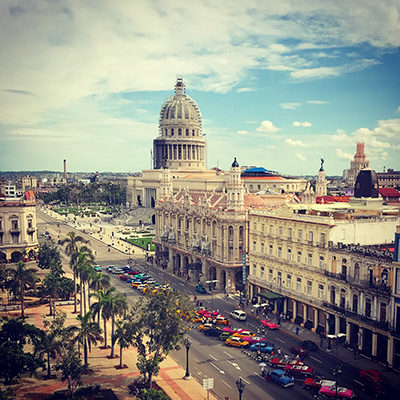
Photo by Bonnie Munday.
That’s all changing. On my recent visit, I was delighted to note that while the staples mentioned above still figure large, there is now so much more—and you don’t have to look hard for it. Here are some of the food highlights of my trip to Havana, Varadero, and points in between.
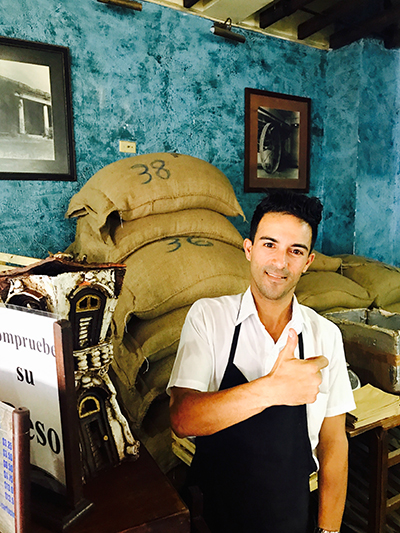
A local barista. Photo by Bonnie Munday.
Five Stars
Our stay at Iberostar, a 5-star hotel on Parque Central square in Havana, was fabulous. By day, you can sip a frozen cocktail at the rooftop pool with its fantastic views of the city. And the rooms were cozy, comfortable and quiet—even if the party in the main-floor lobby never stopped. Fantastic bands play almost around the clock, and it’s a lively atmosphere with dancing, cocktails and cigar service right at your table. For dining, though, what a treat it was to be served a tasting menu at the hotel restaurant El Paseo. The meal included local foods but with a fresh twist: smooth corn chowder topped with chicharron (super-thin fried pork rinds), local lobster tail, and beef served under glass with juniper smoke.
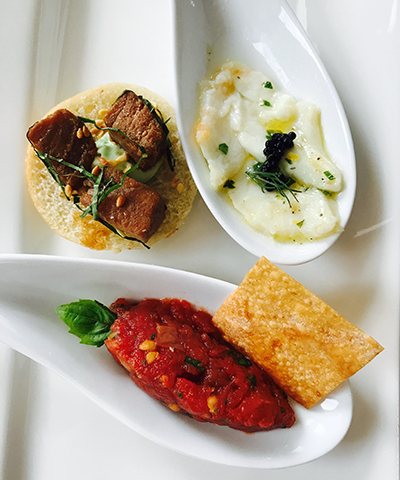
Tapas at the Kempinski Hotel. Photo by Bonnie Munday.
We also checked out the tapas choices in the lobby at Kempinski Hotel, opened in 2017, across the road. Oh my, what delicious bites they were—rabbit pate with Champagne jelly and apple puree; tomato tartare; local lobster ceviche—and in such a pretty setting looking out at the city through soaring floor-to-ceiling windows as a thunderstorm rolled in.
“The variety of ingredients available in Cuba isn’t always huge,” says the hotel’s Director of Food and Beverage, Pedro Assuncao, who moved here from Portugal more than a year ago. “So the biggest challenge, and excitement, is in using what you do have in new ways.” The hotel changes its menus according to what ingredients are seasonally and locally available, and does some fabulous things with them. “For example,” Assuncao says, gesturing out the window, “this rain signifies the start of the mango season, so we’ll create a snack of homemade plantain chips with mango dip.” Yum.
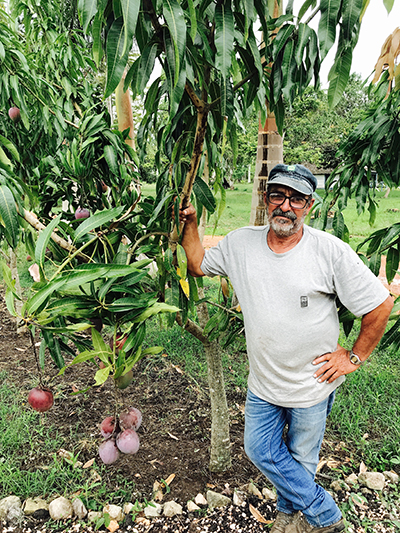
Visiting a farm on the island is a great way to explore the culinary scene. Photo by Bonnie Munday.
Farms
Fincas are growing in popularity among visitors to the island. These farms welcome passersby with foods grown on their own land. One such finca we loved outside Matanzas, en route to Varadero, is run by Hector Luis Correa El Mieda. He produces honey, and grows everything from mangos, mamey fruit, guava and bananas, to beans, garlic and corn—even his own rice.
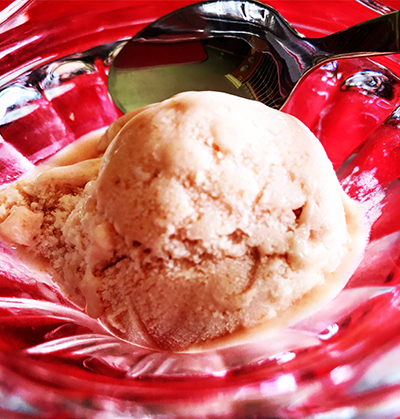
A must have in Cuba: This guava ice cream. Photo by Bonnie Munday.
“I can’t eat any other rice now,” says El Mieda with a big smile. “Nothing else is as good.” I had to agree. And, when enjoyed with his homemade black beans (the beloved Cuban side dish frijoles negros) that he’s slow-cooked with fresh herbs and spices, it’s divine. That was one of many dishes he and his wife served up, including pork marinated all night in orange juice, peppers, turmeric and ginger, then fire-roasted. So delicious. The meal was topped off with a dessert of guava puree with fresh-made cheese. We did stop at another finca just outside Havana, called El Divino—and the fresh-made guava ice cream was the standout highlight for me.
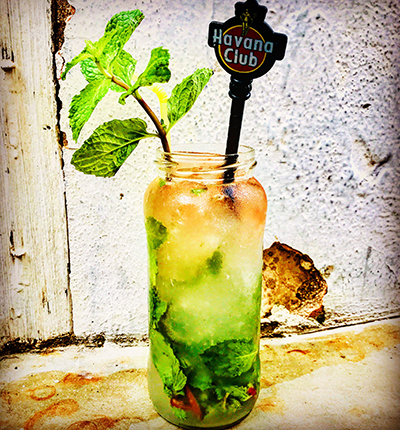
Cuba is the land of mojitos. Photo by Bonnie Munday.
Paladars
Paladars are essentially licensed private restaurants, as opposed to government-run restaurants, and they are growing in number, which is a good thing. It means the owner—usually also the chef—can use the ingredients available to them and cook in innovative new ways. We tried a few in Havana, including the funky rooftop La Fuente with the best-ever mojitos (which, in the land of the mojito, is really saying something) served in large jars, fresh tacos with a variety of fillings, and mini empanadas with homemade salsa.

Diving into these empanadas was a treat. Photo by Bonnie Munday.
Then there was La Moneda Cubana, another rooftop joint with a wide-open view of the city. The highlight for me there was vaca frita—a classic Cuban dish of flash-fried shredded beef. It was crispy, it was tender, it was full of flavour. I won’t soon forget that lunch.
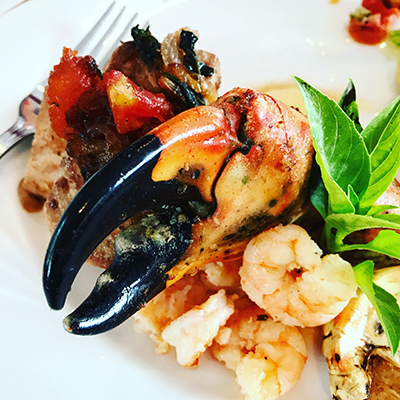
Freshly caught crab. Photo by Bonnie Munday.
It was fitting that the dining highlight of the trip came at the very end, just after departing from the sparkling new Iberostar Varadero resort, right on the beach. Our last dinner left such a wonderful taste in the mouth, thus ensuring my return visit. It was at Terraza Cuba, just outside Varadero in Santa Maria. Every single thing that manager Karell Lopez Palenzuela and his team served up was absolutely delicious. There was fresh-caught crab, steamed to perfection with shrimp. Ropa vieja, which is slow-cooked beef, another classical Cuban dish. But for me, the thing I still crave, weeks after returning home, was the “cup” of deep-fried mashed plantain filled with tender cubes of pork and topped with herbs and fresh, gooey cheese.

You can’t beat a Cuban coffee. Photo by Bonnie Munday.
We finished off this fabulous meal with, of course, a lovely strong Cuban coffee, served with a sugar cane stick on a tobacco-leaf “napkin.” The whole experience was so unique, and absolutely delicious.
All of this adds up to one piece of advice: I recommend that you add food to your list of reasons to go to Cuba.
More From Travel & Style
Celebrity chef David Rocco’s Passion for Travel
Why Carry-on Your Luggage
Jillian Harris’ Packing Essentials

